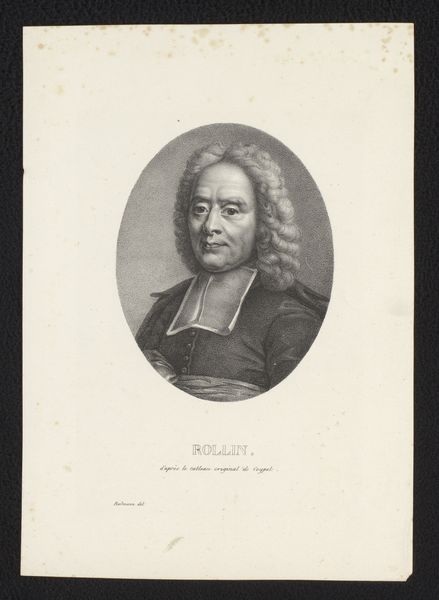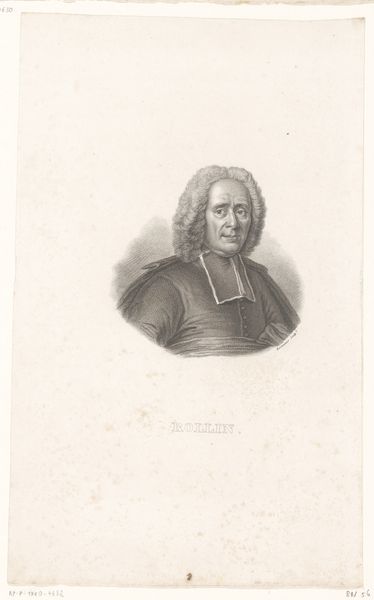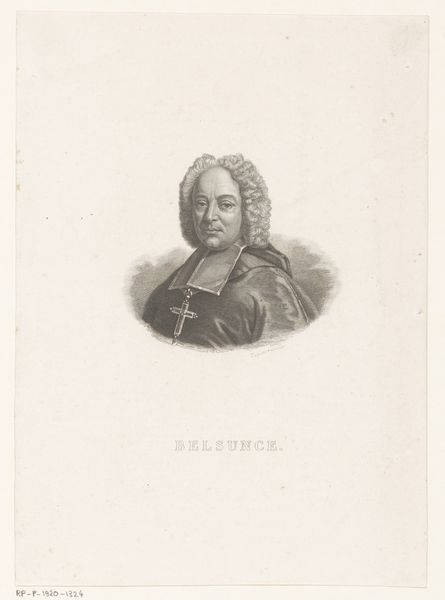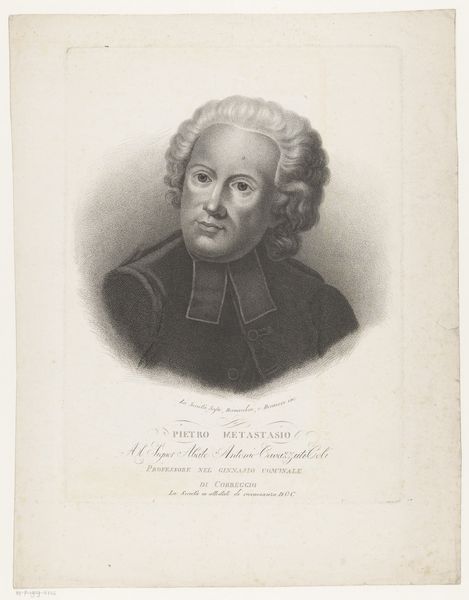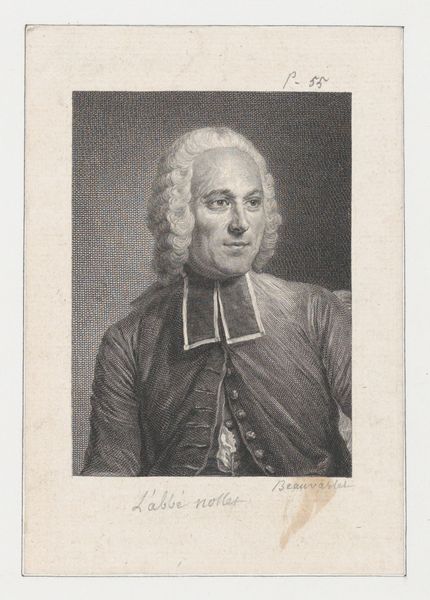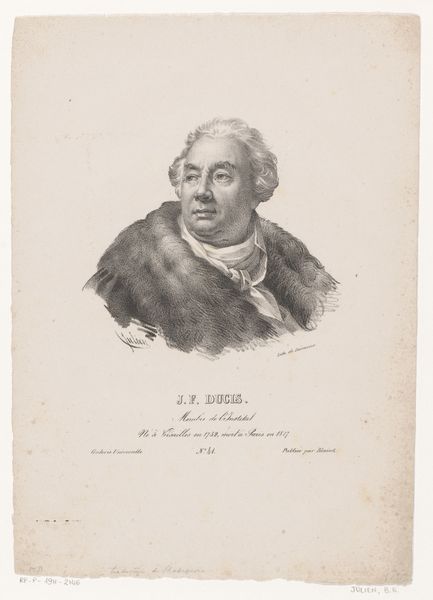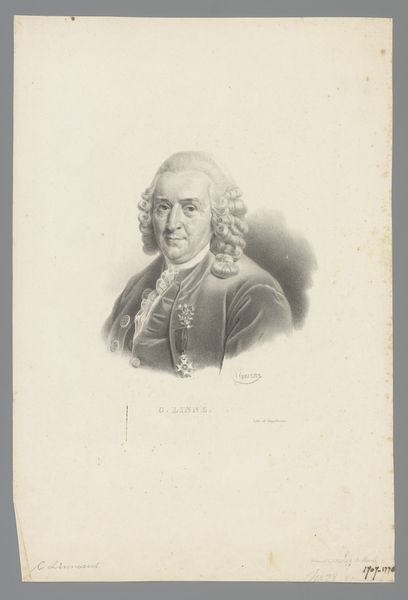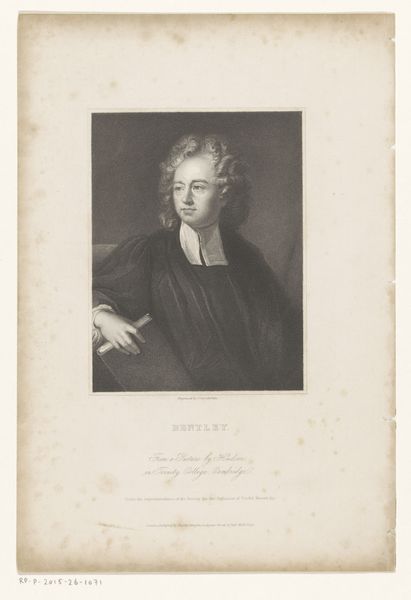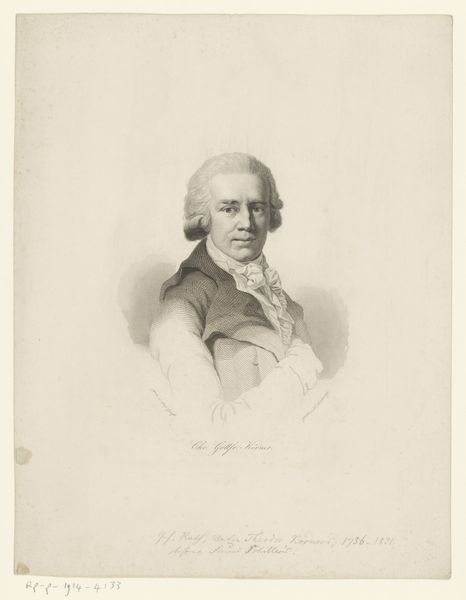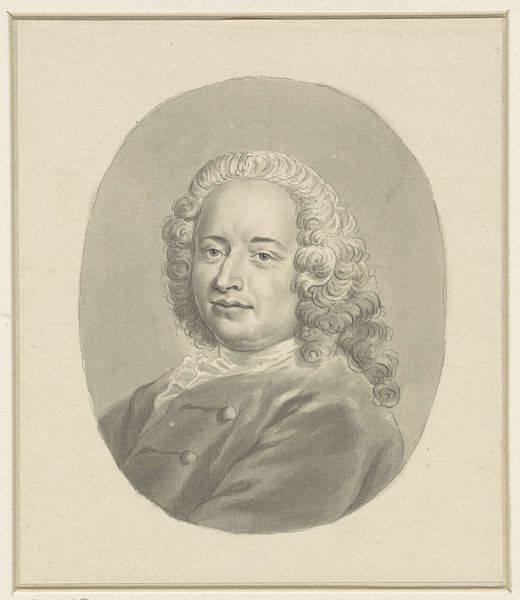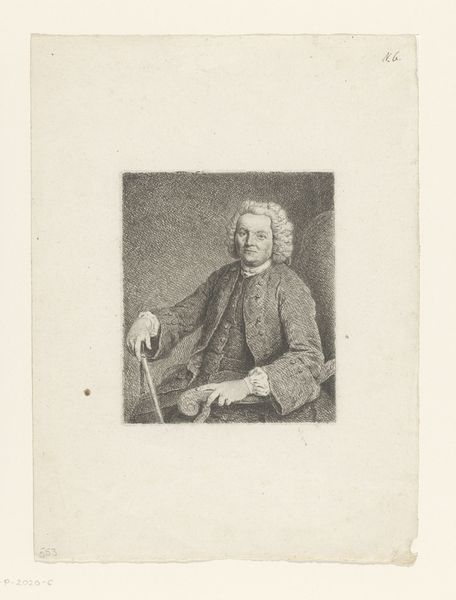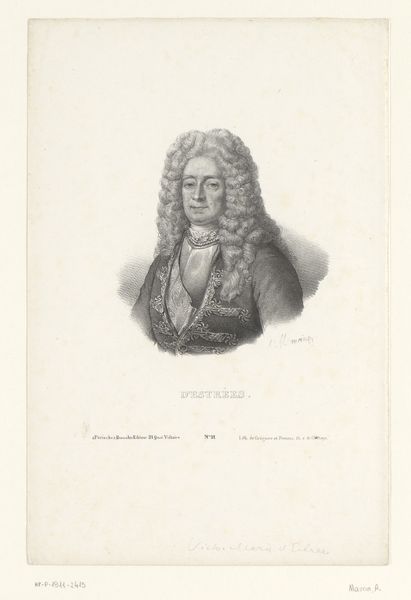
drawing, graphite
#
portrait
#
drawing
#
neoclacissism
#
pencil drawing
#
graphite
#
portrait drawing
#
academic-art
Dimensions: height 490 mm, width 320 mm
Copyright: Rijks Museum: Open Domain
Curator: Welcome. Here we have a portrait drawing of the historian Charles Rollin. It was rendered in graphite, likely as a pencil drawing, sometime between 1825 and 1839 by Charles Louis Bazin. Editor: My first impression is one of formality, and also, perhaps unexpectedly, of softness. There’s something almost dreamlike about the rendering of his face and hair, despite the rigidity of his posture and dress. Curator: Yes, that tension speaks volumes about the period. Rollin was a prominent figure, a historian known for his classical leanings during the rise of Neoclassicism. The portrait style itself echoes this, placing emphasis on reason and order but simultaneously softening those characteristics through portraiture. This style places this figure as being extremely knowledgeable and enlightened in comparison to others within society. Editor: It’s fascinating how the medium itself, graphite, contributes to that sense of softness, even fragility. Knowing Rollin was a historian writing about classical antiquity, I see how this neoclassical presentation serves to cement his authority, linking him visually to the past he interpreted. But how might his personal historical biases impacted those past histories? Curator: His portraits, along with similar historical works from the time, were often commissioned and widely distributed among academies and institutions. They bolstered a shared understanding of history while, undeniably, upholding the existing socio-political status quo and reaffirming power structures. Rollin served important functions throughout history and the ways in which he is depicted highlight important points that have the tendency to be overlooked. Editor: Absolutely, the formal style acts almost as a gatekeeper, controlling the narrative and defining who is deemed worthy of remembrance, even admiration, based on a Eurocentric world view. How much do these formal portrayals limit access for individuals with cultural world views or historical perceptions that don't reflect those being represented? Curator: That's a really relevant point. We should consider who holds power within artistic and academic realms, how artistic canons develop, and how certain voices gain prominence. How can cultural institutions democratize depictions and offer insight in other depictions that may offer diverse perspectives and deeper insights? Editor: This drawing invites so many relevant inquiries. Thinking about how this image reflects larger historical and philosophical movements—and the power structures they maintained—reveals the necessity of consistently reassessing both history and its modern implications.
Comments
No comments
Be the first to comment and join the conversation on the ultimate creative platform.
